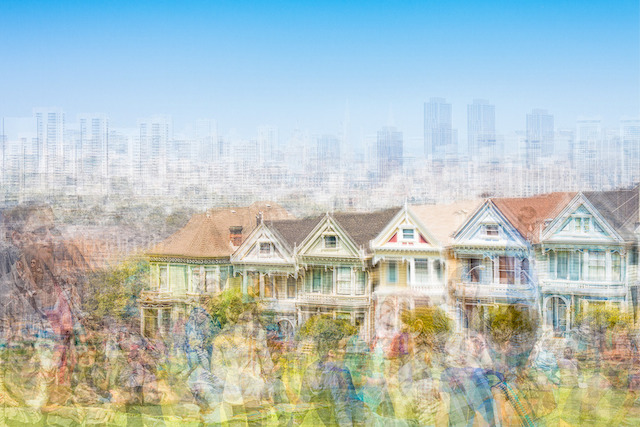Visual lifelogging and its effects
In the past week, the annual SXSW in Austin, Texas, has got many people talking about the future of music, film and the interactive. One of the many talks that stood out in the area of lifelogging is by David McNamara, Director of Digital Strategy. In his slides that you see above, you would find David exploring the notion of how an ‘unexamined (visual) life is not worth living’. He also contrasts the culture of visual lifelogging with the rituals of analogue photography to gain a better understanding of how we are changing the way we preserve and narrate memories and share experiences across the social graph. In particular, he makes an interesting point that traditional analogue photographs are subjective while visual lifelogging is an objective representation of one’s life. In fact, according to his study, which found differences between one’s memory and the camera’s memory, actively taking photos can impair one’s ability to remember. On the other hand, visual lifelogging could stand in the gap between the quantified, qualified, art and science, to help us reach higher goals, make better decisions, create meaning and find insights. However, the digital archives from the visual lifelogging process can only achieve the above if, for instance, a search engine for the self arises. This same sentiment was presented in a BBC interview with Cathal Gurrin, who is already working on a search engine for the self, which indexes information about you for you.
Depth and context

These days, visual lifelogging is all about creating context out of the thousands of photographs taken every day. In the picture you see above, artist Christopher Dydyk portrays carefully layered photographs that capture bustling scenes around the California city. Although he is best known around the world as the co-author of the best selling photo book, Shyboy: The Horse That Came In From The Wild, Dydyk is also an editorial photographer who specializes in event, architectural and people photography. This series you see above, titled “San Francisco Impressions”, is birthed out of a unique editing process that gives his photographs their rich and ghostly qualities. And in an interview with Mashable, Dydyk reveals that although he believes traditional photography is beautiful, it “lacks the multidimensionality to fully express the sensations of energy and joy”. To achieve the sort of pictures you see above, Dydyk snaps city scenes from all possible angles before digitally layering his images into one single photograph. Simply beautiful! What would you do to create more depth and context out of the visual lifelogs that you have?
Read more: Digitally-Layered Photos Paint a Rich Picture of San Francisco and Narrowly Selective Transparency: Susan Sontag on Photography vs. the Other Arts
Image credited to Christopher Dydyk
Have a little fun with imperfections!

While photographs could be post-processed to present a more ideal and beautiful state, we all know how life can be tainted with slight imperfections. Yet, these imperfections can turn out really beautiful if you simply change your perspective and outlook. This picture you see above, is exactly how photographers Davide Luciano and Claudia Ficca have decided to deal with life. According to their website, “Potholes is a series of photographs depicting the concave street cracks and holes as a collection of imaginative tableaux in the city. Captured within the backdrops of New York City, Los Angeles, Toronto and Montreal, the sets explore the urban flaws as a playground creating a multitude of uses out of the potholes.” And while some may argue that Photoshop is a dirty word, here is a case in point that really uses Photoshop creatively and purposefully. Be it as a fisherman’s paradise, depicting the Hollywood Walk of Fame or stepping on grapes to make wine, there is definitely something beautiful that Davide and Claudia have managed to portray out of the otherwise annoying potholes.
Read more: Photographers Find Creative Ways to Deal With Irritating Potholes and All the world’s a stage: Stunning photography project shows ballet dancers anywhere BUT on stage
Image credited to Davide Luciano and Claudia Ficca
A memory of moments, not photos

And perhaps one perfect summary of this week’s blog post is how all of the above are clear examples of moments, not mere pictures. This distinction has been pointed out clearly by Robert Laing, CEO and a co-founder of Gengo, who made a PechaKucha video summary of how the Narrative Clip experience has been for him. For him, posed photos of him are not a part of his memory at all. These are always about the outside looking in. Yet, he always wanted to see how it was with the inside looking out, including all the in-betweens of intentionally-posed moments. Enough said, watch his video now! Don’t miss out (;
Image credited to Robert Laing
If you enjoyed this post, you can also subscribe to our monthly newsletter!
Unsure what´s the best option for you? These are the differences between Narrative Library and Local Storage


